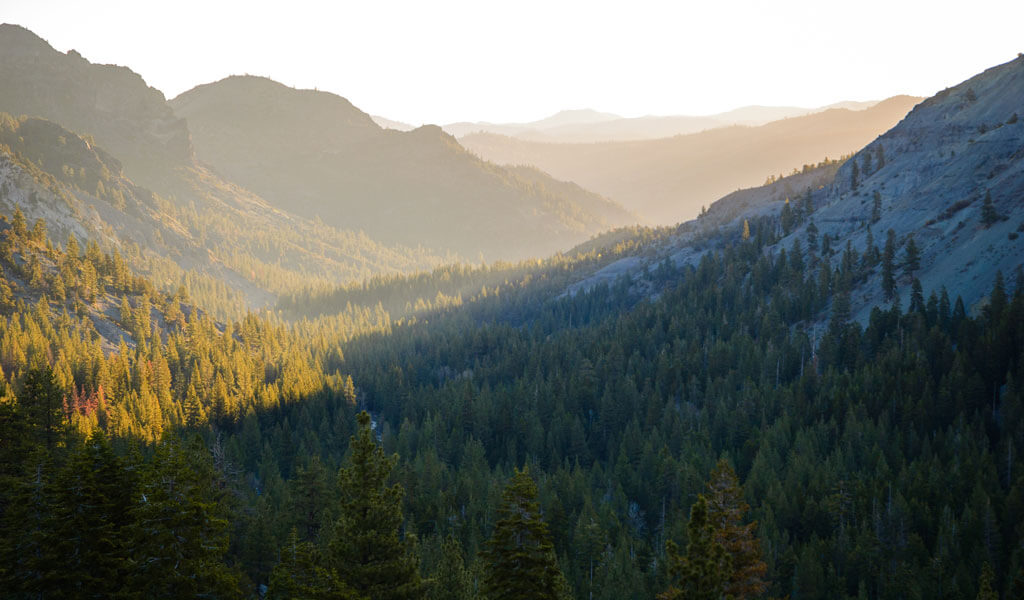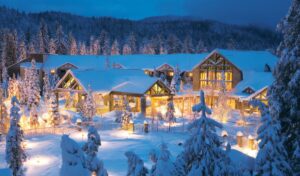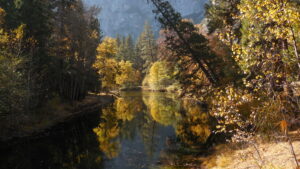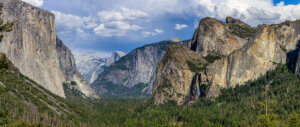Encompassing nearly 900,000 acres and bordering the western edge of Yosemite National Park and Mariposa County, the Stanislaus National Forest is an unforgettable realm of natural beauty. It is primarily located in Tuolumne County, but extends into portions of Mariposa, Calaveras and Alpine counties. With soaring crests, sparkling mountain lakes, towering trees, and canyons carved by wild and scenic rivers, it is one of the oldest national forests in America (established 1897) and served as a bustling mining hub during the California Gold Rush.
Today’s treasure seekers discover giant nuggets of outdoor recreation in the Stanislaus forest. Whether it’s hiking, water sports or camping, the Stanislaus National Forest is a backcountry gem making it the perfect complement to your Mariposa County getaway (and one of the many things to do in Yosemite).
Stanislaus National Forest Hiking
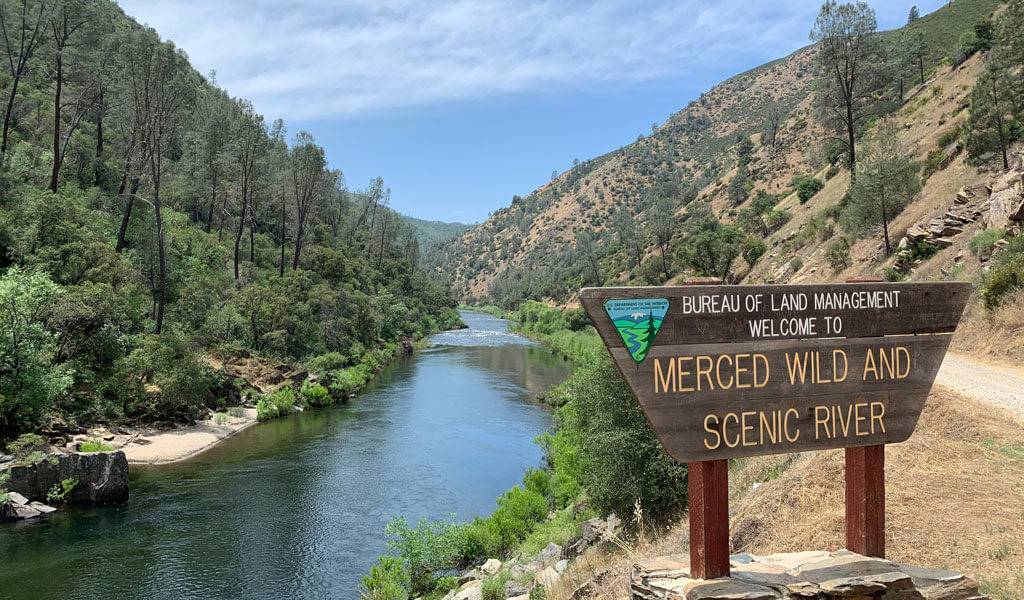
Stanislaus National Forest hiking is hugely popular, with nearly 500 miles of designated trails. Trailheads spur off Highway 140 and 120. The North Fork Merced River Trail to Diana Pool is an epic cannonball waiting to happen. Located along Bean Creek near the historic town of Coulterville, Diana is one of those old-fashioned swimming holes where memories are made. The flat, dog-friendly trail passes through both wooded and open stretches, perfect for kids who want to take a dip in one of several pools along the way. If you still have energy afterward visit the nearby Northern Mariposa County History Center for local Gold Rush tales or Bower Cave, a limestone grotto the native Miwuk people called “Home of the Evening Star” and where stagecoach visitors back in the day held dances on Saturday nights!
From Highway 140, lace up your boots and hit the Merced River Trail. This 5.5 mile out & back trail starts at Railroad Flat Campground. The hike features spring wildflowers and the ever-present serenade of flowing water. At trail’s end there’s a narrow spur that climbs to a seasonal waterfall, worth the effort if still running. The Merced River Trail is dog-friendly (on leash) and great for kids, just remember to bring a hat and plenty of water as there is little cover.
Stanislaus National Forest Fishing
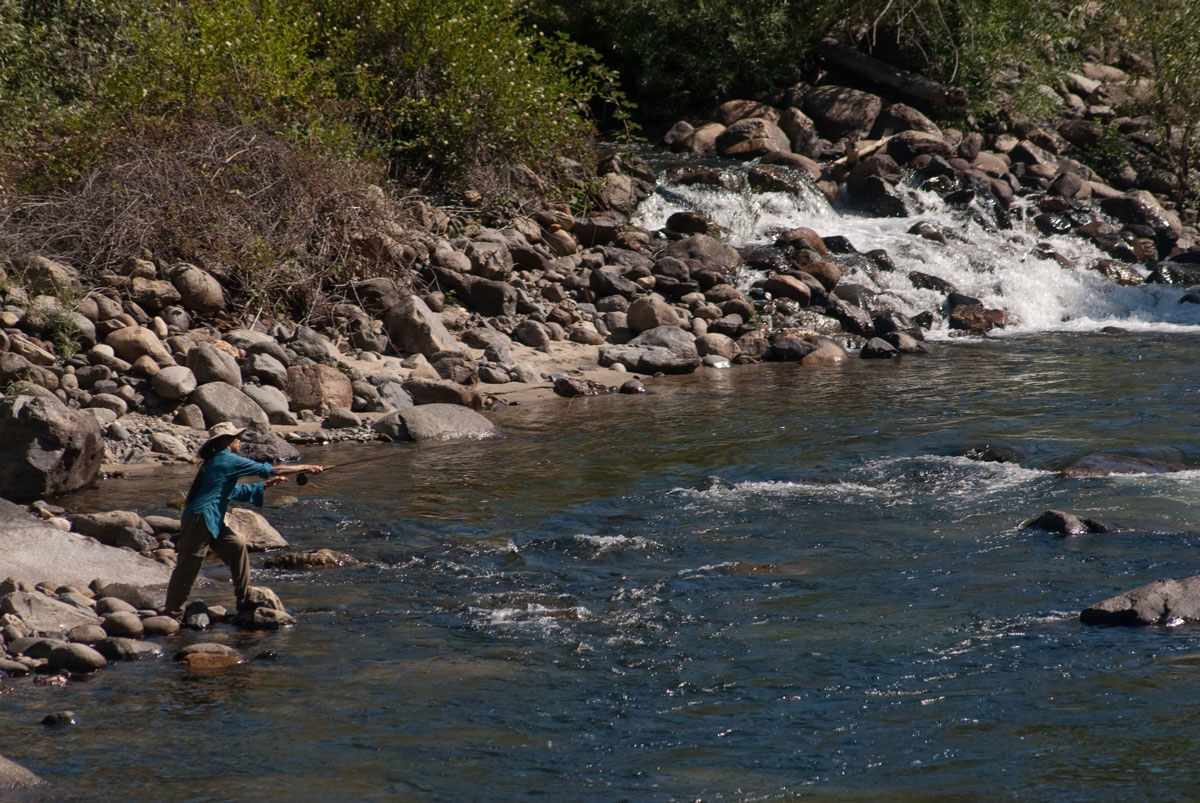
Because Stanislaus National Forest contains over 800 miles of river, it’s considered an ideal fishing destination to many. At the southern extent of the Stanislaus National Forest, the Merced River alternates between long riffles and pocket water within casting distance of its banks. Rainbow and brown trout school here, but these savvy natives are sure to test an angler’s know-how. The Merced is a great fall and winter fishing destination, staying so until spring snow runoff begins around April when the river runs a little wilder.
The Merced River’s Wild and Scenic status adds a few extra conditions to fishing””for all species, only fish over 12 inches or larger may be taken and only on artificial lures with barbless hooks. The practice of catch and release is recommended. Before wetting a line, the California Freshwater Sportfishing Regulations guide is a must-read. The Merced River details are found on page 50.
Stanislaus National Forest Off-Roading Opportunities
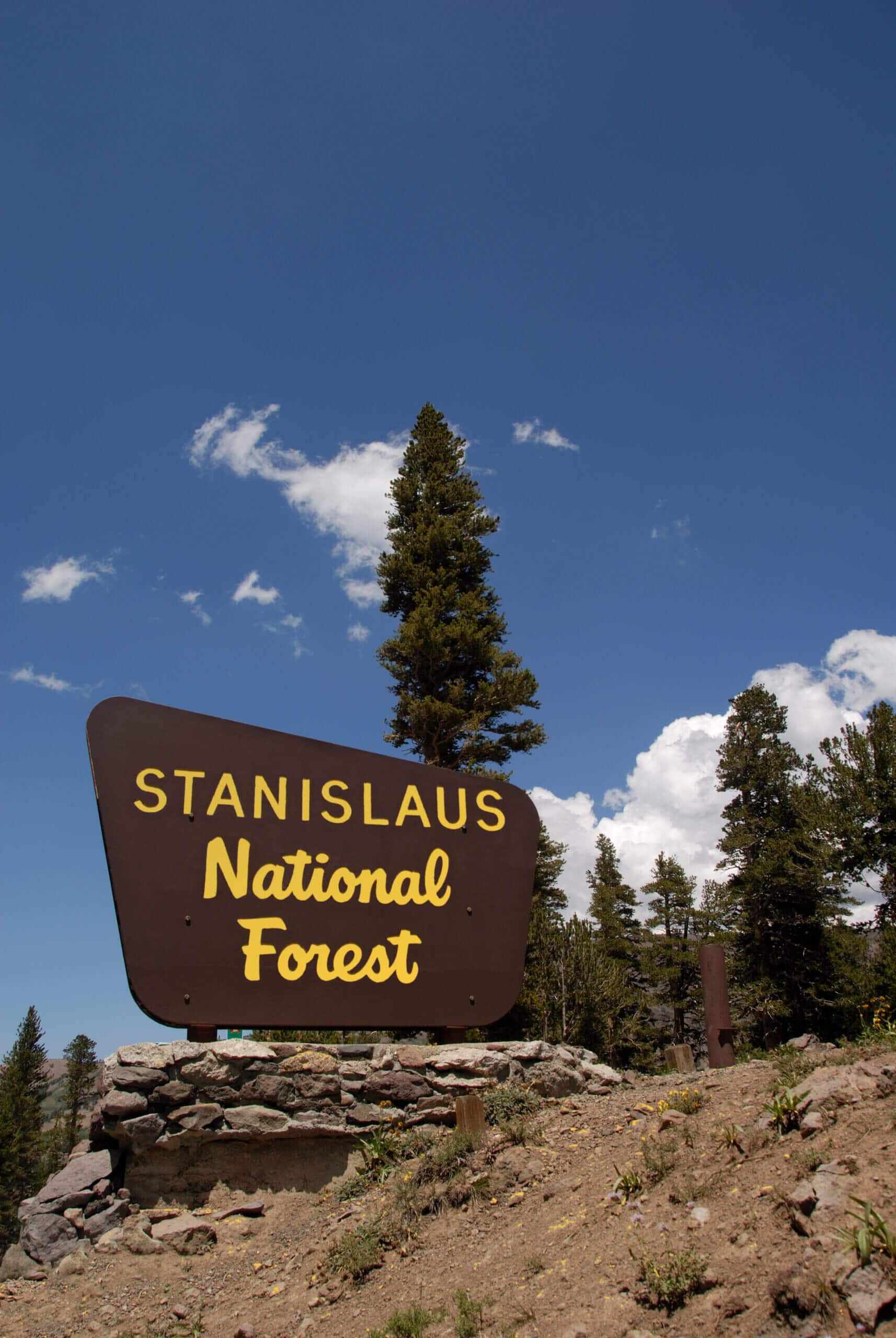
Geared up? Off-highway driving and camping opportunities on Stanislaus National Forest land are high-octane fun for OHV enthusiasts. Trails for motorcycles and all-terrain vehicles are open, as well as hundreds of miles of unpaved roads suitable for 4WD vehicles. Free user guidelines and route maps are available at all Ranger Stations as well as online: www.fs.usda.gov/stanislaus
Remember, off-highway vehicle recreation is just one of many uses allowed on public lands. Others include hunting, fishing, hiking, mountain bike riding, horseback riding, and sightseeing. Drive by the golden rule ““ yield the right of way to non-motorized visitors.
Stanislaus National Forest Whitewater Rafting
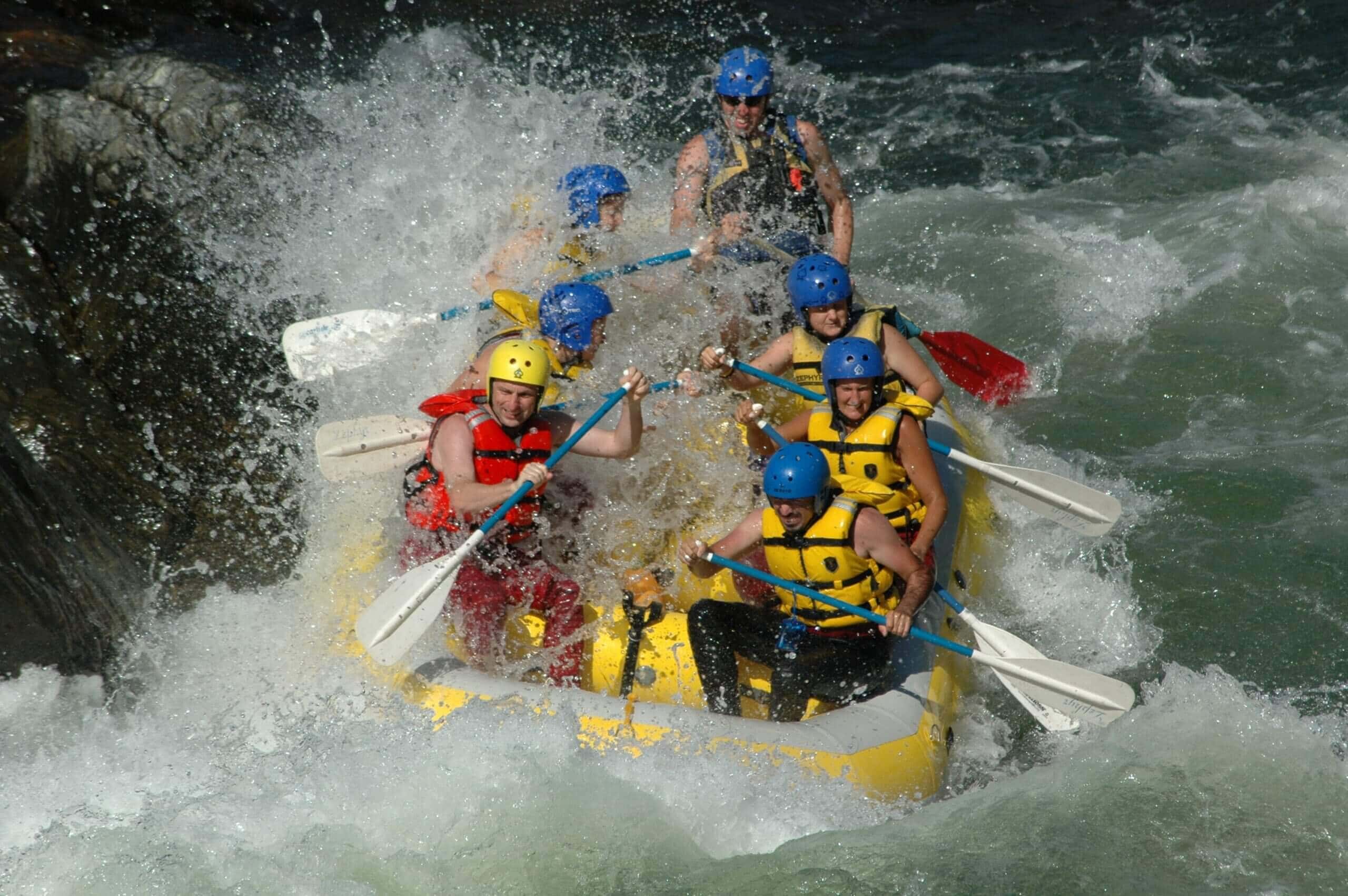
Tumbling down a dramatic canyon from Yosemite National Park along all-season Highway 140, the Wild & Scenic Merced River forms the southern boundary of Stanislaus National Forest as it arcs carves its path across the heart of Mariposa County.
White water enthusiasts can sign up with a local guide to safely navigate the North Fork of the Merced’s predominantly Class IV and V rapids. Quarter Mile Rapids is just one heralded whitewater rafting experience on the river, but only safe when the conditions are right and in the company of a guide. The North Fork Falls on the main stem, just upriver of the confluence with the North Fork, is a popular stop for lunch by both rafters and hikers.
For the national forest auto tourist, numerous pullouts exist along the scenic highway that lead down to placid picnic areas and cool swimming holes. There are also numerous opportunities to raft in the Tuolumne River or canoe and kayak in other bodies of water in Stanislaus National Forest, like Spicer reservoir or Cherry Lake.
Cool Corners of Stanislaus National Forest
Merced Grove
Just over the Stanislaus National Forest line into Yosemite National Park is a stand of ruddy-barked wide-bodies: Sequoia sempervirens. The Merced Grove is one of three Giant Sequoia groves in Yosemite National Park, home to 20 ancient and truly massive trees that are visible after a 1.5-mile hike with 500 feet of elevation loss. (The uphill hike back to the parking lot is a real thigh burner; bring plenty of water).
Where to Stay in Stanislaus National Forest
Mariposa County offers a wide variety of lodging options for exploring the Stanislaus National Forest. From full-service hotels to vacation rentals and campgrounds, there are many hotels, motels and private vacation rentals in and around Mariposa, Coulterville and Buck Meadows, all giving great day-tripper access to Stanislaus National Forest.
Stanislaus National Forest Camping
Dispersed camping ““ or camping outside of a designated campground ““ is a great option when visiting Stanislaus National Forest. Just pop up your tent in a corner of the forest! Since there are no fees or facilities, self-reliance is key; bring your own water or treat water you collect, pack out your trash and know that tables and fire pits will not be provided. Campfire permits are required and available online. Sure, it takes more effort than camping in a developed campground, but for those with an adventurous spirit, dispersed camping offers next-level recreational rewards and a chance to be truly in the woods.
For a more traditional campground experience, The Pines campground is set within a mixed conifer forested site adjacent to the Little Golden Forest Trail and near the Groveland Ranger District Office. The campground includes a large group site. The Stanislaus River campground also offers over 20 campsites with vault toilets and picnic tables.
Getting to Stanislaus National Forest
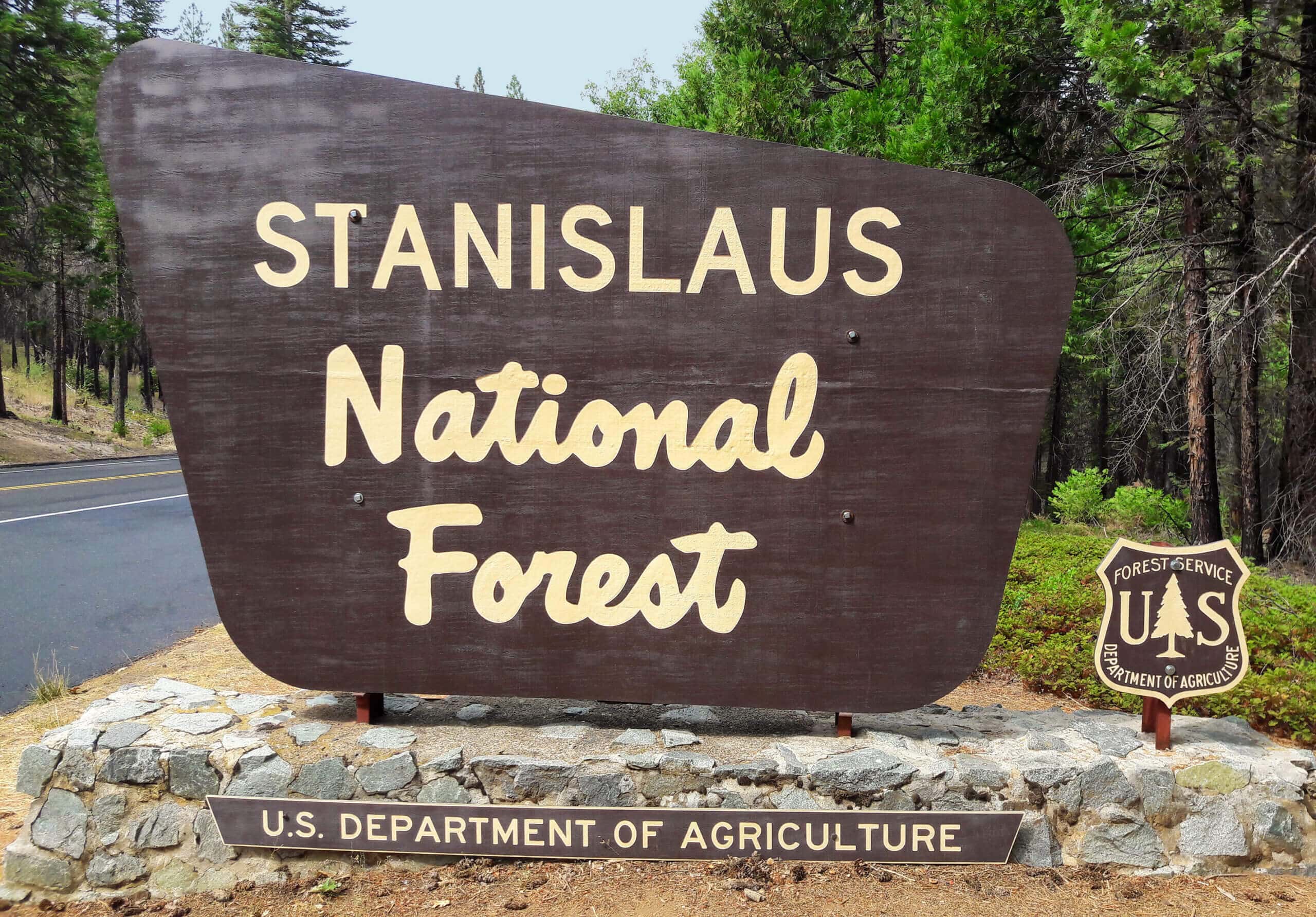
The Stanislaus National Forest is just a two-hour drive from the Great Central Valley, three hours from the San Francisco Bay Area and four hours from Los Angeles ““ yet a world away from California’s population hubs. Make Mariposa County your base camp and get after it.

